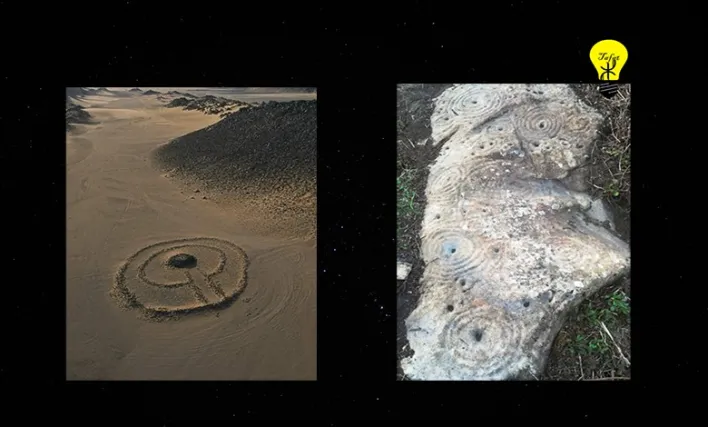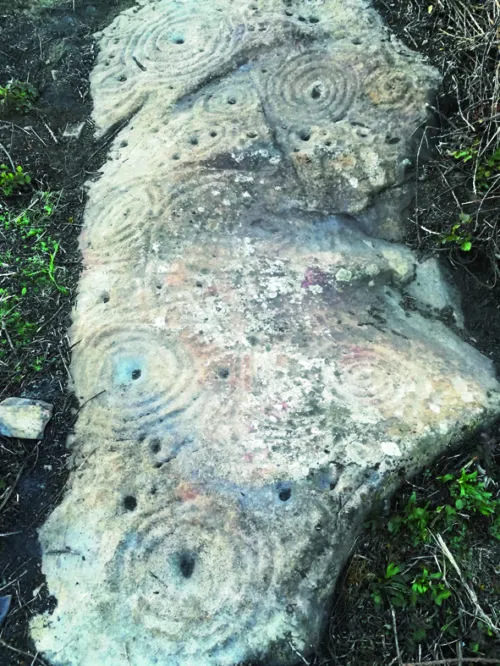An archaeological discovery in Bejaia dating back to the prehistoric period related to the Tassili paintings in southern Algeria

A stele dating from prehistoric times, bearing strange inscriptions and decorations, was discovered in Adkar, Bejaia state. The discovery was made by a local history buff in the middle of the Akvadu forest.
The journalists of the Algerian newspaper El Watan, who conveyed the information, moved to the place, accompanied by Dr. Farid Kharbouch, director of the National Center for Anthropological and Historical Research (CNRPAH). He registered his astonishment at this mysterious and questionable discovery and emphasized that the matter deserved urgent, serious and in-depth attention.

The find was a large flattened boulder. Covered by strange geometric patterns According to Dr. Farid Kharbouch, these spiral patterns observed on this strange rock have a similarity in Tassili, as well as in the Canary Islands, on the island of Palmas in particular. It has also been determined that this type of remains have been found in Australia, Europe and South Africa. It is believed to be a religious custom practiced by several ethnic groups during prehistoric times.

Royal burials of the ancient Amazighs in Tassili N’Ajour in Tin amali
The inscriptions on this mysterious rock and the so-called “cups”, concave depressions, a few millimeters deep, which can be circular or elliptical in shape, were carried out by a man’s hand on often folded stones. The mystery that still surrounds this type of drawing today means that its significance remains unknown.
However, archaeologists prefer to link these strange inscriptions to ancient religious or funerary rites, and at the same time there are those who link them to astronomical knowledge of that era.
This stele discovered in Bejaia, due to the strange inscriptions attached to the Mesolithic era (-9600 to -6000), according to specialists, was returned underground after recording its coordinates, in order to protect it from the danger of destruction and desecration.
Source: websites

